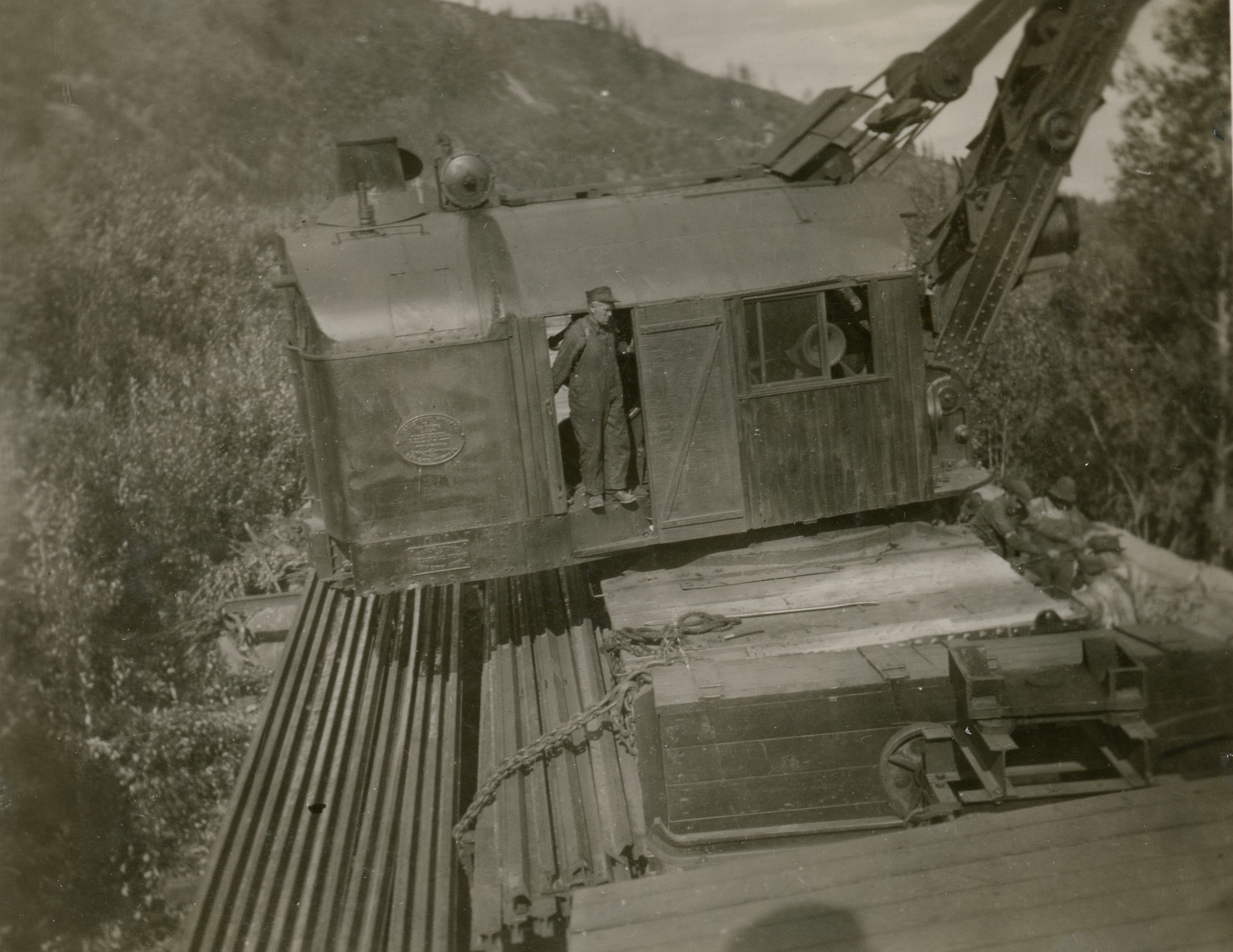Photo 2304.0028: Canadian Pacific train with workers filling in the trestle bridge with waste rock from the Centre Star mine, visible in the background, circa 1910. Ensuring safety on the tracks was not only beneficial for the train companies but also for the mines that relied on their services to transport the ore to the nearby smelters.
Reinforcing Wooden Trestle Bridges
It was common practice to build wooden trestle bridges to connect railroad routes over gaps or creeks and then fill the trestles in with waste rock/slag/any convenient material. Trestles were typically built on site out of locally sourced materials - especially in remote, mountainous areas like Rossland - and the temporary nature of the materials (untreated wood) made trestles quick and easy to build. Filling in a trestle - creating a “fill” - was generally preferred to maintaining a wooden trestle bridge. A fill was sturdier, less likely to burn down or collapse, and would overall last much longer and manage heavier loads. The above photo shows Canadian Pacific railway workers filling in one of their trestle bridges with waste rock from the Centre Star Mine in Rossland.
Train Safety
By 1900, Canada had standardized a method of rail track safety as all the major rail lines, realizing the efficiency of the method, had individually decided to adopt it. Tracks would be divided into subdivisions averaging 200 kilometres in length and then further divided into sections of rail around 15 kilometres in length. Each section was run by a foreman and his crew who reported to a higher foreman or road-master for the entire subdivision. This method ensured that every section of rail was properly cared for, while also allowing for a more holistic understanding of the wear and tear on larger stretches of rail.
“Track work calls for unceasing care and vigilance at all times and in all weathers. A constant watch must be kept for cracks or broken rails, for track distortion, mis-alignment or creep, and for ‘pumping’ ties which require packing. The bar that secures one rail to another must be periodically removed and greased to allow for movement in the steel caused by temperature changes.”
Track Maintenance Vehicles
The track maintenance vehicles seen on the grounds of the museum were used to keep the railways in and around Rossland safe and functioning. The two railway lines through Rossland - the Great Northern and Canadian Pacific - required constant maintenance to remain properly functioning. Crews would use hand cars and velocipedes to quickly get themselves and their tools to specific areas of track and to perform routine monitoring of the track.
Velocipedes
Nicknamed ‘speeders’ by BC track workers, velocipedes are a form of modified bicycle made to ride on a rail track. The user sits on a small seat and pulls a lever to propel the machine manually. Some later models used foot pedals instead of a lever. The machine typically had three wheels, two on one side of the rail to propel it forward and one on the other side to stabilize it. These one-man machines were most commonly used by foremen as well as crew members carrying out surveying work rather than actual repairs, such as signal maintainers and track inspectors. The lightweight contraption was excellent in that it could easily be lifted on and off the track by one person. Its convenient and efficient design led it to be used for track maintenance in BC well into the 1970s.
Photo 2309.0253: A Red Mountain Railway train crossing a 38-metre truss bridge on its way to Rossland. The routes of both the Red Mountain Railway to Northport and the Columbia and Western to Trail were broken by deep ravines such as this one, requiring many small truss bridges to be built. This geography added an extra challenge to track maintenance, with extra vigilance needing to be taken to ensure these bridges remained sturdy.
Hand Cars
Hand cars first came into use on rail tracks in the 1860s, allowing crews of 4 to 6 men and their tools to travel on the rail lines much quicker than walking. The first models of hand cars were propelled by spinning hand cranks, but being quite dangerous, these where soon replaced and finally abandoned by 1887. Early cars were made in-house by rail companies for their maintenance crews, but in the 1880s, commercial cars began being manufactured. Weighing roughly 500 to 600 pounds, the cars were designed to fit 4 people but able to be lifted on and off the tracks by just 2. These cars used a hand-pump system similar to a see-saw, wherein two workers would stand on opposite sides of the cart and together pump the lever. The car could reach speeds of 13 kilometres per hour on flat grades and up to 24 kilometres per hour on downhill grades, and were controlled by a foot pedal brake.
Human-propelled hand cars faced more issues than velocipedes, as the larger design and need to carry many men and gear meant crews would often be tired out upon arrival at the work site simply by propelling themselves there before even getting started on the work. Therefore, pump cars began to be converted into motorized cars by attaching 4-gallon motors to them, much like the motor of a lawnmower. By the 1920s, commercially motorized cars became the standard for maintenance crews.
Continue the Outdoor Tour:
Contribute your own memories/experiences of the Railways in Rossland:
The form below will email us your message. If you prefer to speak to us directly or have other questions or comments about this page, please call (250) 362-7722 or email the archives directly at archives @rosslandmuseum.ca




